QR Codes in Healthcare: Adoption Statistics and Future Trends
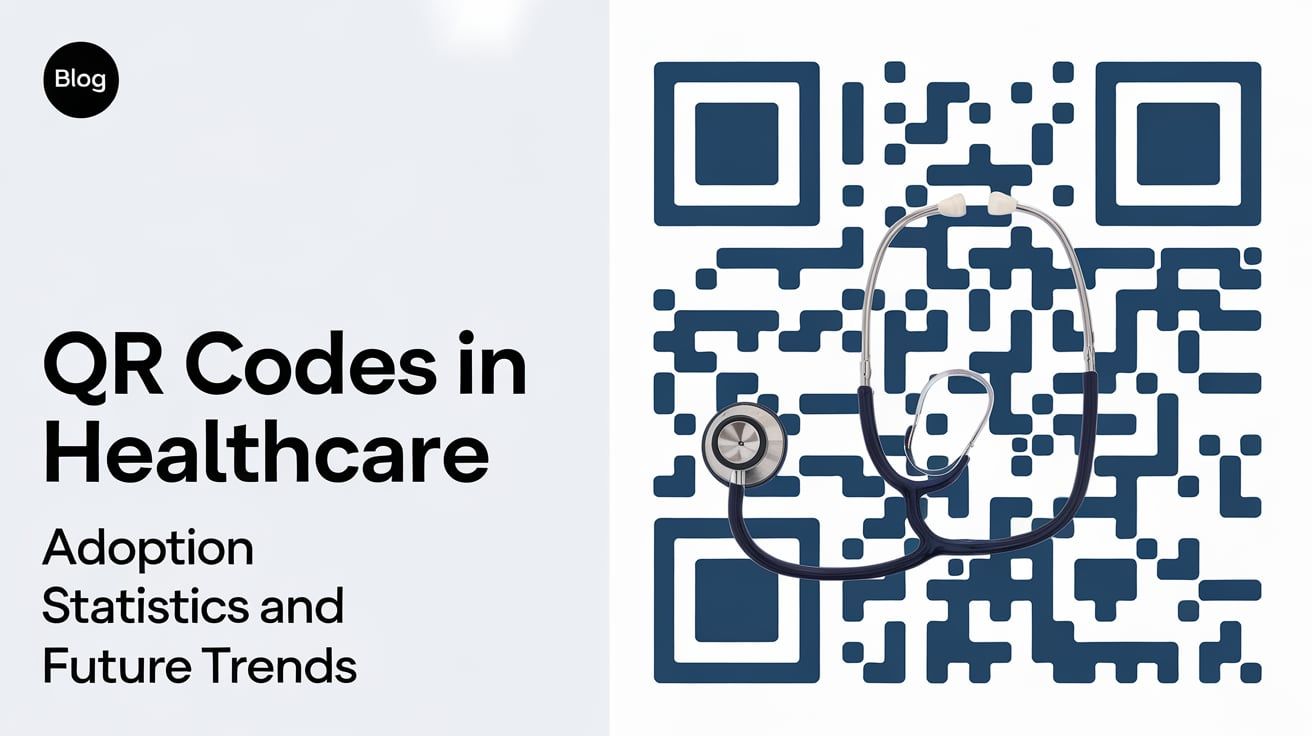
The modern healthcare landscape is constantly a being reshaped by new technologies. Among these advancements, Quick Response (QR) codes have emerged as a transformative tool, impacting various facets of healthcare delivery. From patient care to administrative processes, QR Codes are playing an increasingly vital role in healthcare settings, offering enhanced efficiency, novel forms of communication, and improved services.
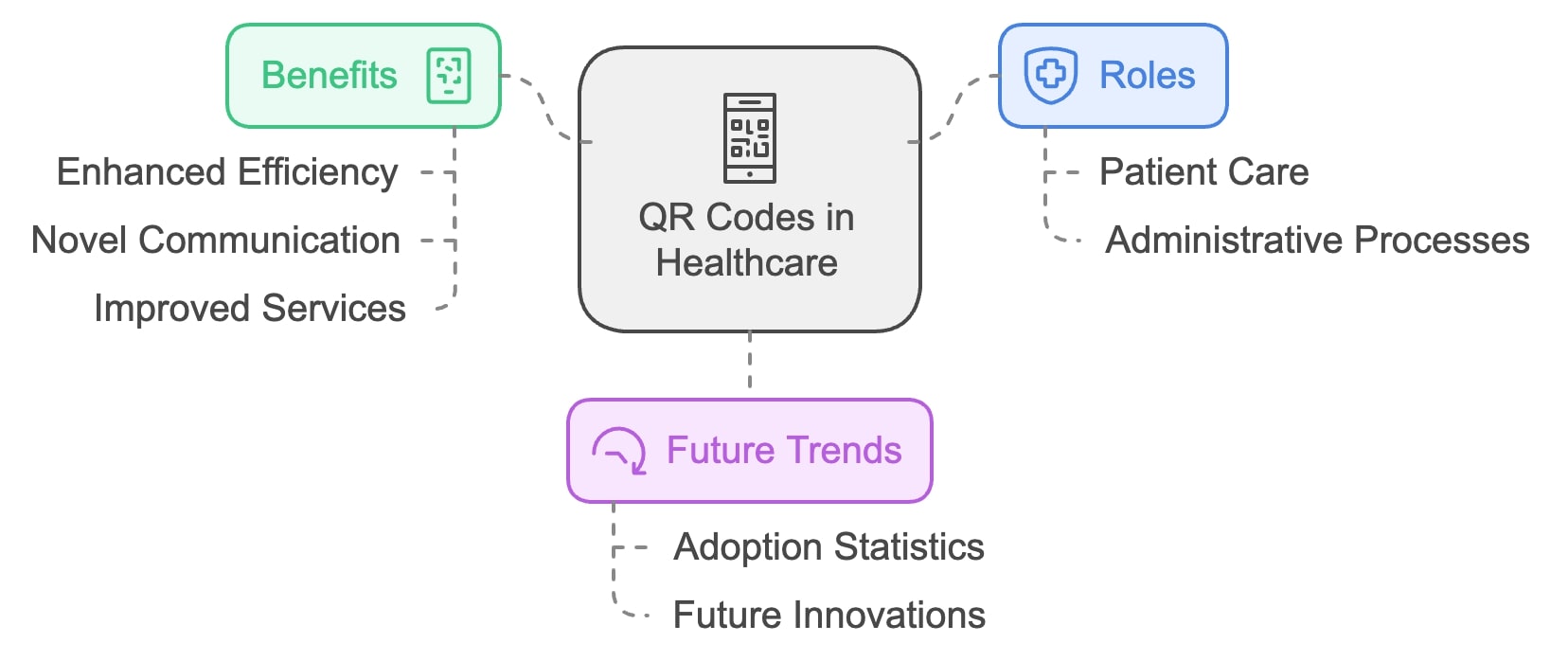
QR codes or Quick Response codes are two-dimensional barcodes that can be scanned using any smartphone camera. They offer a versatile and efficient means of storing and accessing information, making them particularly useful in fast-paced, data-driven environments like healthcare. With the ability to store a massive amount of data and the simplicity of scanning them via smartphones, QR codes are rapidly being adopted in various sectors, with healthcare being no exception.
According to a comprehensive review by Pratyusha Joshi and Sahil Sawant, QR codes have brought about significant changes in the healthcare sector. This article will delve into the adoption statistics of QR Codes in healthcare and discuss future trends that are expected to pave the way for a more connected and efficient healthcare system.
Importance of QR codes in the Modern Healthcare Landscape
The integration of QR codes in healthcare settings is revolutionizing patient care, streamlining administrative processes, and improving communication between healthcare providers and patients. Their application ranges from facilitating access to patient medical records, scheduling appointments digitally to ensuring the proper storage and access of medication information.
According to the Healthcare Information and Management Systems Society (HIMSS), approximately 72% of healthcare organizations are either utilizing or planning to utilize QR codes within their operations. This widespread adoption is indicative of the growing recognition of the benefits that QR codes bring to the healthcare sector.
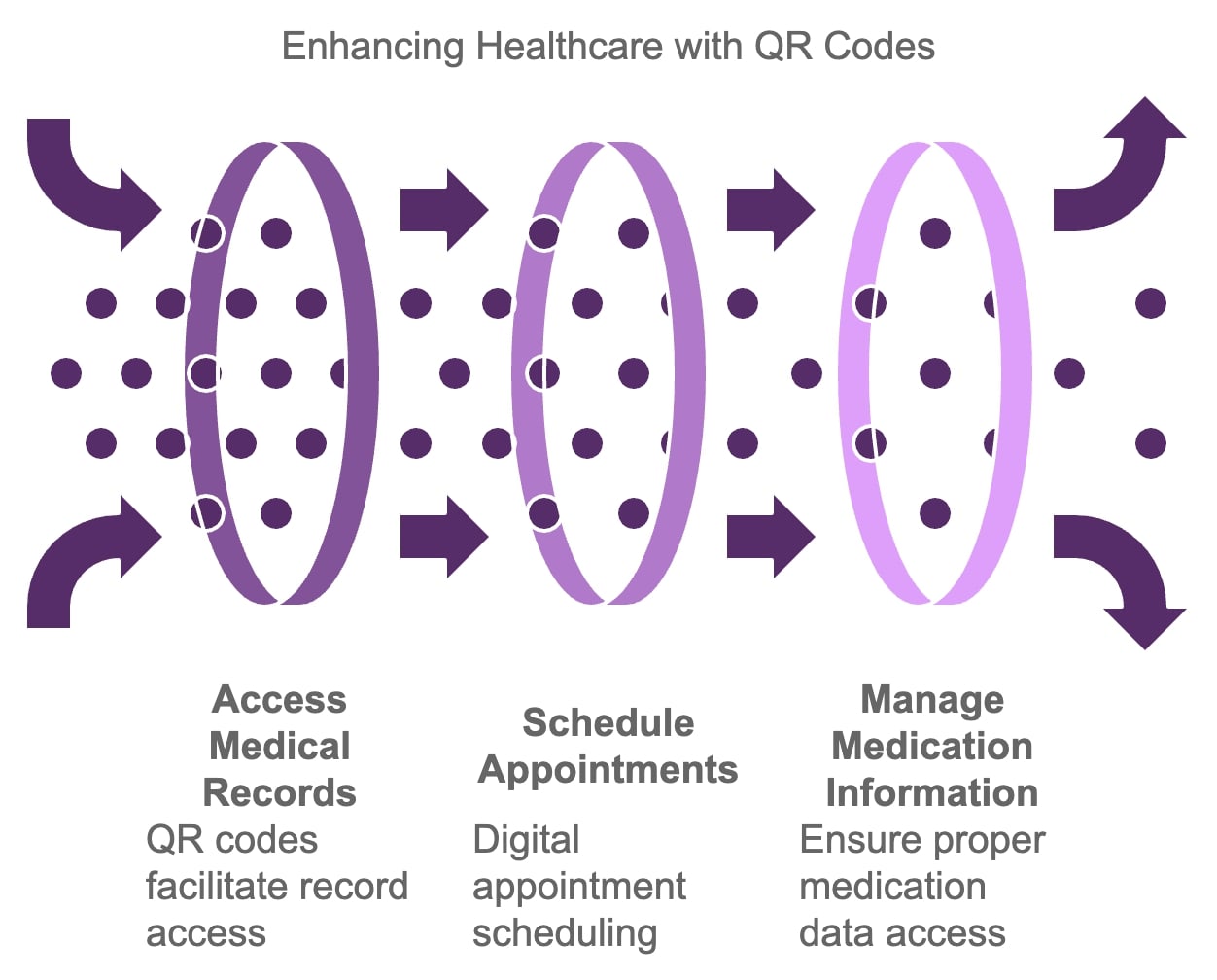
Undoubtedly, the future of healthcare belongs to innovations that enhance patient care, streamline operations, and ensure the secure and swift exchange of medical information – innovations powered by QR codes.
The Rapid Adoption of QR Codes in Healthcare
The transition towards digitization in healthcare has been accelerated by the adoption of QR codes. This technological innovation has been utilized to streamline various aspects of healthcare, including patient care, operational processes, and communication.
Integration of QR codes into Patient Care and Management
Embedding QR codes in patient care has significantly improved the quality of care provided to patients. QR codes can be integrated into patient wristbands or labels on medication bottles, allowing professionals to access critical patient information instantly, such as medical history, current medications, and allergy information.
This immediate access to critical data can facilitate accurate and timely patient care, reducing the likelihood of errors and enhancing the patient's experience.
Utilization of QR codes for Efficient Operations
QR codes have proven to be instrumental in streamlining administrative processes in healthcare settings. They play an integral role in appointment scheduling, facilitating swift and easy booking, rescheduling, or cancelations. Additionally, hospitals use QR codes to manage inventory, track medical equipment, and monitor medication administration – ensuring that resources are used efficiently and thereby reducing the risk of errors.
Improvement in Communication through QR Codes
QR codes can significantly enhance communication in healthcare settings by providing quick and easy access to information. Healthcare providers can share test results, appointment reminders, and educational resources with patients quickly by simply generating a QR code.
This novel communication method can enhance patient engagement, improve the patient experience, and foster stronger relationships between patients and healthcare providers.
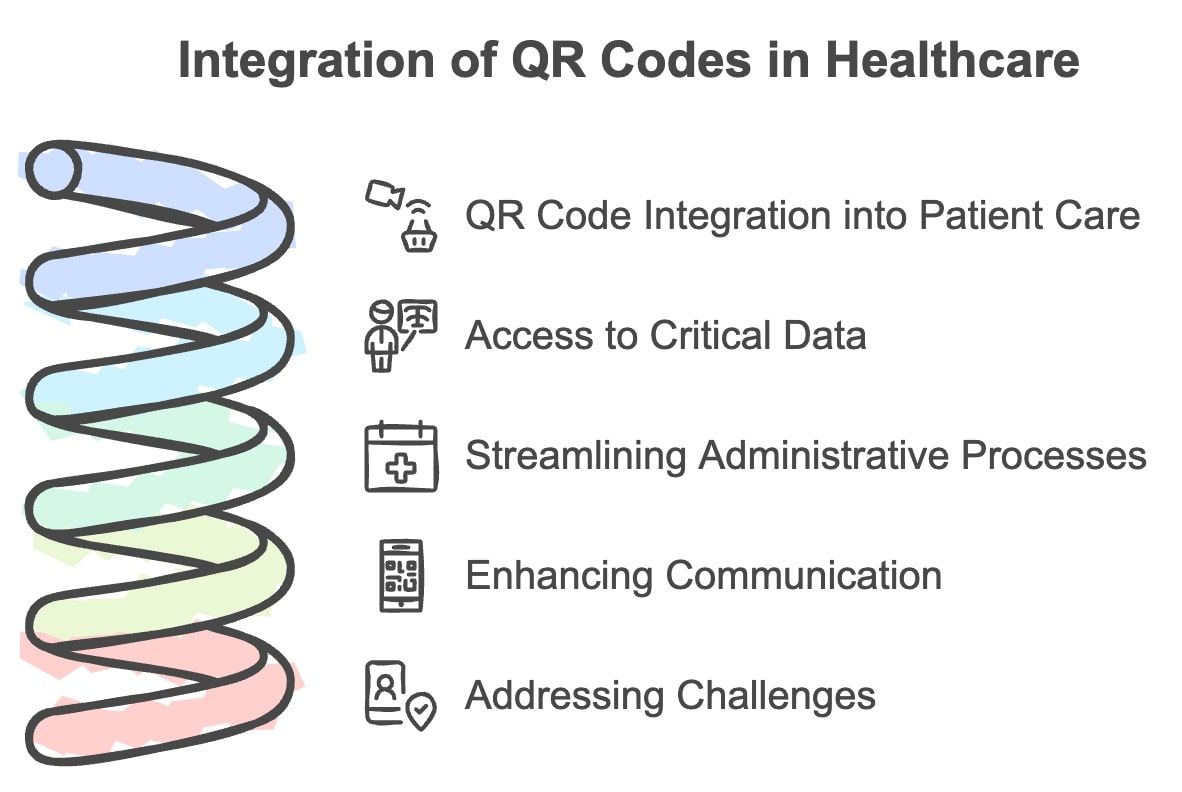
Despite the benefits of QR codes in healthcare, as with any new technology, challenges abound. Ensuring security and privacy, accessibility, and ease of use are critical for successful integration. The subsequent sections will provide more insight into these challenges and the potential solutions for them.
QR Code Usage Statistics in Healthcare
QR Codes have been significantly adopted in various healthcare domains. Let's delve into some compelling statistics to understand how healthcare providers are utilizing this technology.
Current Usage Rates of QR Codes in Healthcare Settings
A significant proportion of healthcare organizations are using QR codes as an integral part of their operations, with 72% either utilizing or planning to use them according to HIMSS. They are particularly helpful in enhancing patient care and optimizing operational efficiency.
Comparison of QR Code Usage Between Various Healthcare Domains
The usage of QR codes varies across different aspects of healthcare. While some areas have rapidly adopted QR codes, others are slowly inching towards their use. For instance, QR codes are widely used for patient engagement and communication with a high usage rate of 26.67% compared to the relatively lower adoption in other areas.
Growth Trends in QR Code Usage in Healthcare
The usage of QR codes in healthcare has grown exponentially over the past few years, and it is expected to soar even higher in the coming years. Enhanced security, efficiency, and interactivity offered by QR codes make them a promising tool for future healthcare innovations.
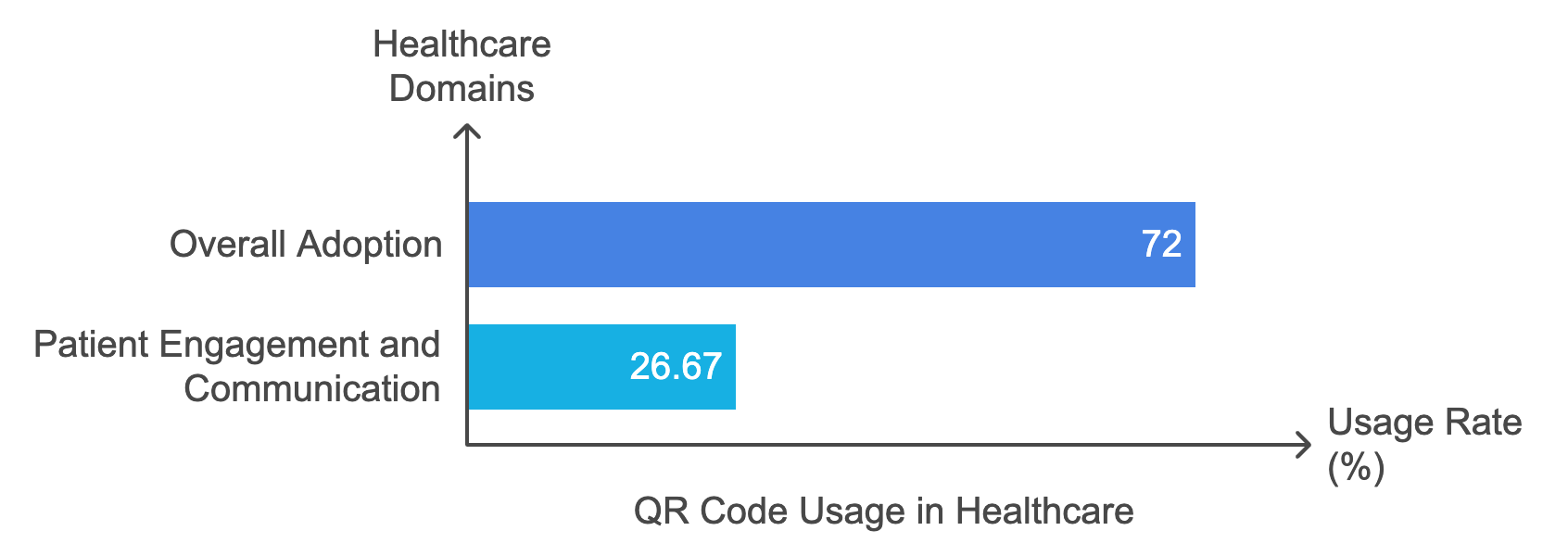
Role of QR Codes in Patient Engagement and Communication
Enhancing patient engagement and improving the communication between healthcare professionals and patients is a critical aspect of healthcare delivery. QR codes serve as an efficient tool in this realm, offering an innovative solution to address these challenges.
Statistics of QR Codes Usage for Patient Engagement
Research shows that QR codes are extensively used for patient engagement, accounting for around 26.67% of usage in healthcare settings. This is indicative of the massive potential QR codes offer in driving increased patient involvement and improving their healthcare journey.
Case Studies of Successful QR Code Implementations for Patient Communication
Several healthcare organizations have successfully implemented QR codes to enhance patient communication. An example is the Princess Nourah University Dental Hospital, which implemented a QR code-based identity system for healthcare providers. The system facilitated quick access to relevant medical information and supported real-time learning, which proved valuable for continuing nursing education.
Future Trends in QR Code Usage for Patient Engagement
As technology advances, QR codes are likely to play an even more significant role in patient engagement. Future applications may include personalized patient education materials, interactive health monitoring systems, and more. The key to these advancements will be ensuring that QR code-based solutions are user-friendly and accessible to all patients.
Streamlining Operations with QR Codes
Efficiency is a crucial determinant of effective healthcare delivery. Through their versatility and quick response traits, QR codes have facilitated significant operational efficiency in healthcare settings.
Impact of QR Codes on Operational Efficiency in Healthcare Settings
Healthcare facilities around the globe are leveraging QR codes to drive efficiency in their operations. By reducing the reliance on paper-based documentation and enabling digital workflows, QR codes minimize redundancy and save valuable time. For instance, they have found significant utility in appointment scheduling, allowing patients to book, cancel, and reschedule appointments with just a scan.
Case Studies showcasing the Successful Use of QR Codes in Streamlining Healthcare Operations
One noteworthy implementation of QR codes in healthcare operations is their utilization for efficient inventory management. By embedding QR codes on medical equipment or medication, healthcare professionals can instantly access important data such as usage instructions or expiration dates, reducing the risk of human errors.
Predicted Future Trends of QR Code Usage for Operational Efficiency
The future looks promising for the integration of QR codes in healthcare operations. Proposed advancements include using QR codes for automated patient triaging systems, improved inventory forecasting, and streamlining telemedicine services.
QR Codes Enhancing Healthcare Security and Authentication
In the digital age, securing sensitive patient information is paramount to the healthcare industry. QR codes serve a significant role in enhancing data security and ensuring proper authentication.
Overview of QR Codes in Healthcare Security and Data Protection
QR codes contain an excellent capability to secure patient data and control access to medical records, promising a secure line of defense against data breaches. They can be designed to restrict access to critical patient information, which can be viewed only after a secure and verified QR code scan.
Statistics related to the Usage of QR Codes for Healthcare Data Security
Recent studies have shown that QR codes play an essential role in enhancing security and privacy. About 60% of studies that researched QR codes in healthcare emphasized their effectiveness in enhancing security and privacy.
Future Implications of QR Codes in Enhancing Security and Privacy in Healthcare
The potential for the integration of QR codes in healthcare data security is vast. With advancements in encryption standards and growing integration of technologies like blockchain and zero water-marking schemes, QR codes promise a secure future for healthcare data management.
QR Codes in Medical Education and Training
Modern healthcare education has recognized the potential of QR codes as an effective tool for enhancing educational resources and training among healthcare professionals.
Utilization of QR Codes for Educational Resources in Healthcare
QR codes are gaining traction as an educational tool within the healthcare sector. They enable quick access to learning resources, thereby enhancing student interest and effectiveness. They can be used to provide immediate access to relevant medical information, support real-time learning, and bridge the gap between traditional and digital retrieval methods.
Statistics Showing the Rise of QR Code usage in Healthcare Education
About 16.67% of healthcare uses of QR codes are related to educational tools and resources, according to recent research. This figure underscores the significant role QR codes play in promoting a more engaging and productive learning environment in healthcare education.
Future Prospects of QR Codes in Medical Education and Training
The potential for QR codes in medical education and training is immense and ranges from just-in-time learning for healthcare professionals to using QR codes for procedural assessments. Advanced technologies, user-friendly interfaces, and the ability to integrate with other digital tools make QR codes a promising avenue in healthcare education and training.
Challenges and Limitations of Using QR Codes in Healthcare
While QR codes have proven to be immensely beneficial in the healthcare sector, their implementation and wholesome integration are not without challenges. This section discusses some potential limitations and ways to mitigate these challenges.
Current Challenges in Implementing QR Codes in Healthcare
A primary concern while using QR codes in healthcare revolves around the security and privacy of patient information. Unauthorized access to QR code data could lead to breaches of sensitive health information, raising concerns about patient confidentiality and data protection. Additionally, technical issues like inaccurate scanning of QR codes, compatibility constraints with certain devices, weak internet coverage in clinical areas, and maintenance of system updates impact the robustness of QR code systems.
Technical Limitations of QR Code Implementation in Healthcare
The efficacy of QR codes is contingent upon the widespread availability and use of compatible technology. The reliance on smartphone or device scanning for QR codes can be a barrier for populations with limited access to digital devices, potentially exacerbating healthcare disparities. This emphasizes the need for robust solutions, redundancy plans, and user training to fully realize the potential of QR codes in healthcare, without excluding any demographic.
Possible Solutions and Overcoming Challenges
The evident challenges in QR code implementation in healthcare call for dynamic solutions. Ensuring robust data encryption standards, standardizing the use of QR codes across systems, and making the technology accessible to a wider audience are some approaches healthcare organizations can adopt. Collaborative efforts from technologists, healthcare professionals, and policymakers are critical to effectively mitigate these challenges.
Future Trends of QR Codes in Healthcare
As healthcare continues to evolve with technology advancements, QR codes are anticipated to play an increasingly vital role in enhancing healthcare delivery and outcomes.
Predicted Trends of QR Code Usage in Healthcare
The future of QR codes in healthcare looks particularly promising. With the trend of digitization in full swing, the use of QR codes in the sector is expected to soar over the coming years. Emerging trends indicate a rise in personalized patient education materials, interactive health monitoring systems, and an increased emphasis on security.
Important Role of QR Codes in Future Healthcare Innovations
The emergence of telemedicine, personal health monitoring devices, and digital health records herald the integration of QR codes into future healthcare innovations. By acting as an easy-to-use interface between patients and digital health services, QR codes could bridge the gap, making healthcare more accessible and personalized.
Standardization and Technological Advancements in QR Code Technology
Effective utilization of QR codes in healthcare requires standardized protocols across different healthcare providers and platforms. In addition, there is a constant drive for technological advancements to maximize the benefits of QR code technology in healthcare. Secure encryption, faster scanning algorithms, and improvements in error correction are some areas where advancements are expected.
Conclusion
QR codes, with their simplicity and versatility, have already begun to revolutionize the healthcare sector. They have brought about significant changes particularly in patient care, operational efficiency, patient engagement, healthcare security, and medical education.
By rapidly integrating into diverse aspects of healthcare, QR codes have a potential to become an indispensable tool in modern healthcare systems. However, like any technology, they come with their own set of challenges. Security, technical constraints, and accessibility are some concerns that need to be addressed for successful integration.
With current and upcoming advancements in QR code technology, they are poised to play a significant role in future healthcare trends. By bridging the gap between healthcare providers and patients, QR codes stand at the forefront of healthcare digitization, promising a future where healthcare is more connected, efficient, and accessible.
The journey of QR codes in healthcare is just beginning. It is critical for healthcare providers to embrace this technology and for tech innovators to focus on overcoming existing challenges. It indeed promises an exciting journey ahead with QR codes, redefining the future of healthcare delivery and outcomes.
Frequently Asked Questions
What is a QR Code?
- A QR Code or Quick Response Code is a type of barcode that can be scanned using a smartphone camera. It's a tool that provides quick and easy access to information.
How are QR Codes used in Healthcare?
- QR Codes are used in various ways in healthcare: to facilitate access to patient medical records, for efficient operations like scheduling appointments digitally and managing inventory, and to enhance communication between healthcare professionals and patients.
Why are QR Codes important in healthcare?
- QR Codes can store vast amounts of data, which is particularly useful in healthcare settings where quick and easy access to information is crucial. They improve patient care, enhance operational efficiency, and provide a means of secure communication.
What are the limitations and challenges of using QR Codes in healthcare?
- The limitations and challenges include protecting the privacy and security of sensitive information, ensuring that the technology is accessible to all patients, and addressing technical issues such as inaccurate scanning.
What is the future of QR Codes in healthcare?
- The future of QR codes in healthcare looks promising. Trends show an increase in personalized patient education materials, interactive health monitoring systems, and an increased emphasis on security.
How can QR Codes help in improving telemedicine services?
- QR codes, by acting as an easy-to-use interface between patients and digital health services, could bridge the gap and make telemedicine services more accessible and personalized.
Check other articles you may want to look:
Are Free QR Code Generators Safe?
How Many QR Code Combinations are Possible?

